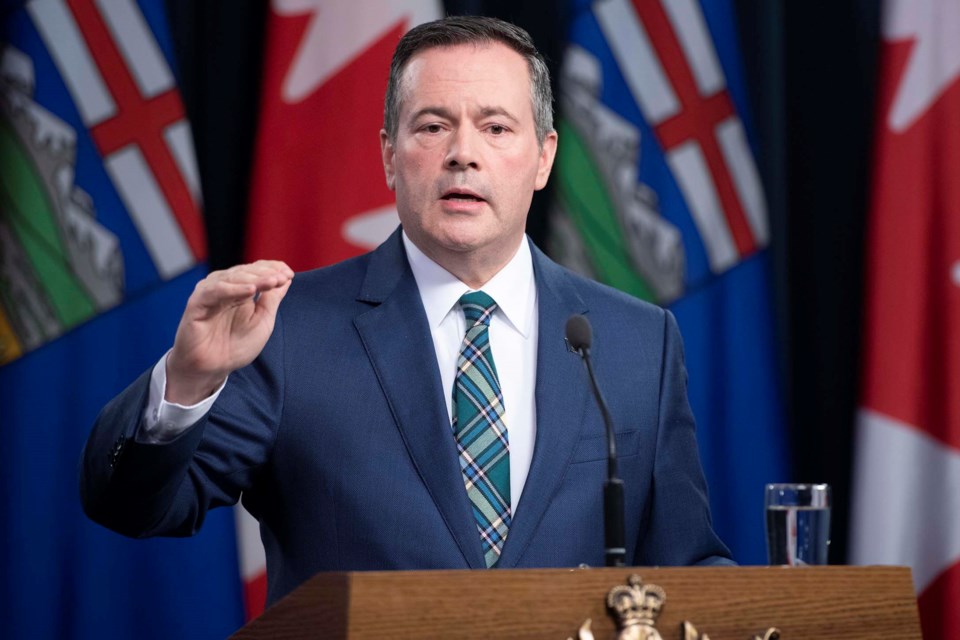ALBERTA – Alberta Premier Jason Kenney announced Tuesday (April 7) that public health measures to combat the COVID-19 pandemic will likely remain in place until the end of May to protect the health and economy of the province.
“This simply cannot and will not continue indefinitely,” Kenney said. “I want this to end as soon as you do but we simply cannot risk letting the virus loose in Alberta. That would create a public health catastrophe – leaving our economy even further battered.”
The province is in the midst of an economic and health crisis, Kenney said, adding that Alberta is facing a war on three fronts – the COVID-19 crisis, the shutdown of the economy due to the pandemic and the collapse of global energy prices.
The health and economic crisis will have a devastating impact on the province's finances, Kenney said, adding that he expects Alberta’s budget deficit could triple from $7 billion to almost $20 billion.
“Faced with this triple threat, our job is to save lives and livelihoods,” he said. “Our first priority is protecting the health of Albertans at the same time the huge damage to our economy, to livelihoods is also having a real impact on the health and well-being of Albertans.”
The economy and the pandemic are “intertwined” and the province will be doing everything in its power to bring an end to the COVID-19 virus so the economy can be restarted and a recovery effort can begin, he said.
As of Tuesday evening, 1,373 Albertans tested positive for the virus, 42 patients have been hospitalized and 26 have died.
The province's testing rate has been critical for containing the virus, Kenney said, because it has identified close contacts between those who are infected allowing for the province to limit the spread of the virus through community transmission.
“What matters most is how many people with COVID-19 end up in hospitals, especially intensive care,” Kenney said, explaining that the rate of COVID-19 hospitalizations and those in intensive care units is much lower in comparison to other provinces.
He added that the curve of infection in Alberta is much lower than in many other parts of the world and as of now resembles countries that have successfully contained the virus. At the same time, all steps are being taken to expand the capacity of the province's health care system to prepare for the peak of the virus.
Kenney said modelling completed by Alberta Health Services indicates that there are two scenarios the province could face when the pandemic reaches the peak rate of infection.
“We’re not out of the woods yet,” Kenney said. “Things could get much worse if we fail to follow the public health orders.”
The probable scenario presented by Alberta Health Services indicated the peak of infections could occur in mid-May, Kenney said. He added that from the first case of COVID-19 to the end of the summer as many as 800,000 infections could occur and between 400 and 3,100 deaths.
Under the most serious scenario presented infections could peak at the beginning of May and as many as one million infections and between 500 and 6,600 deaths could occur.
“These models are not a done deal. I want Albertans to instead see them as a challenge— perhaps the greatest challenge of our generation,” Kenney said. “Those numbers are not inevitable, how this actually plays out, how many people are infected, how many people die and whether we overwhelm our health care system. All of that depends on us and our choices.”
Kenney implored Albertan’s to follow the public health measures that have been put in place, follow proper hygiene protocol and practise social distancing. The Premier added that experts warn that if none of these measures were in place the province could face a worst-case scenario as 1.6 million infections and 32,000 deaths.
“Our health system would collapse under the weight of that chaos,” Kenney said. “Albertans will not let that happen.”
The pandemic has caused financial stress for Albertans and a plan is being put in place to gradually lift the public health measures in place and begin gradually restarting the economy while preventing a second wave of the virus.
Kenney said a relaunch strategy is in development and will include an aggressive system of mass testing with the hope of completing 20,000 tests a day, more precise tracking of those who come in content with infected individuals, stronger COVID-19 screening and quarantining of international travellers who arrive in the province, strict enforcement of quarantine orders through the use of technology that includes smartphone apps and encouraging and facilitating the use of masks in crowded public spaces.
These focused efforts will allow the province to “relaunch” the economy once the worst of the pandemic is over while protecting Albertans from future outbreaks, the Premier said.
An economic recovery council has been established to develop a plan to weather the COVID-19 health and economic crisis and emerge with a stronger and more diversified economy, Kenney said.
A global economic recovery is expected later this year, but the crash in energy prices means Alberta's economic downturn will face a longer road of recovery.
“I cannot overstate how grave the implications of this will be for jobs, our economy and the financial security of Albertans,” Kenney said, adding that the price of oil has been made worse by a “predatory price war” led by Saudi Arabia and Russia that is working to permanently damage North America's energy industry.
Alberta has begun talks with United States leaders to establish a coordinated defence of the North American energy industry. Kenney added that the province has also made a historic investment in the Keystone XL pipeline in an effort to save the energy industry.
“We are taking control of our economic destiny, investing with confidence in the future of Alberta,” Kenney said.
More detailed modelling data will be released Wednesday (April 8).







